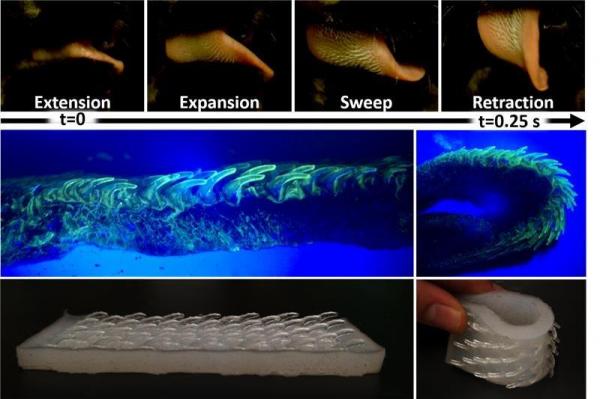If you have ever been kissed (licked) by a cat, you probably noticed instantly that unlike the smooth feel of a dog’s tongue, the feline tongue feels more like wet sandpaper. Not that many of us go around rubbing ourselves with wet sandpaper, but you get what I mean. It has been known for some time that while the unique texture and tackiness of the feline tongue serves more than one function (like picking up bits of food), first and foremost it is utilized as a grooming tool.
New research indicates that the microstructures of the feline tongue are uniquely suited to performing the task of grooming as they are able to seek and pull out snags, tangles and potential matting typical in a cat’s coat. Alexis Noel is a Georgia Tech mechanical engineering doctoral candidate who says, “When the cat’s tongue hits a snag, it pulls on the hooks, which rotate to penetrate the snag even further.” Noel further states, “Like a heat-seeking missile for snags, the hook’s mobility allows the cat to better tease tangles apart.”
The hook-like nobs on a cat’s tongue are not like the stiff rods on a hairbrush that tend to stick straight up. Rather, when not in use, the flexible hooks are flattened on top of one another pointing in the same single direction like shingles on a roof. This in turn allows the accumulated tangled hair to be easily swept away. “This configuration provides openings in a single direction, enabling the mat of hair around the bristles to be removed with a single finger swipe,” says Noel. “These openings face the cat’s throat and [are] also why cats swallow their hair and end up with hairballs.”
In order to test the functionality of the hair-grabbing hooks, Noel and her colleagues built a model cat tongue 400 percent larger than an actual cat tongue. Through tests the researchers discovered the model tongue was effective in untangling fur samples and was surprisingly easy to clean.
Researchers believe similar microstructures could be adapted for use in the fields of healthcare and cosmetics. In fact, Noel and her colleagues recently filed a patent to develop cat tongue mimic technology. “The flexibility of cats’ tongue spines may have broad-reaching applications from an easy-to-clean hairbrush to wound cleaning within the medical field,” she said.
This article was adapted from a UPI story by Brooks Hays titled “Study reveals the unique surface structures on a cat’s tongue.”


